Welcome to our comprehensive Diamond Cuts Guide! This extensive resource will provide you with a wealth of knowledge about different diamond cuts. Grasping the intricacies of these various cuts can aid you considerably when preparing to sell your diamond.
Through this guide, we strive to furnish you with insights that can help you make informed decisions regarding the sale of your diamond. At Diamonds USA, our goal is to guide you seamlessly through the diamond-selling process.
Introduction to Diamond Cuts
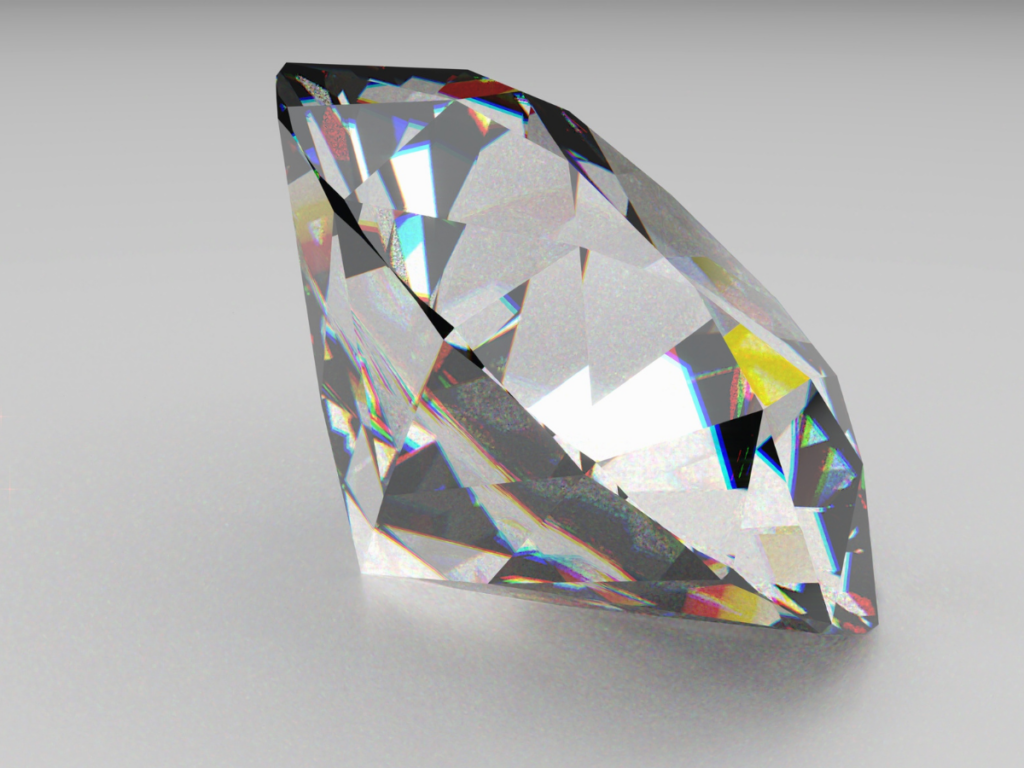
The cut of a diamond not only refers to the diamond’s shape but how successfully the diamond brings light back to a person’s eye.
A Well-Cut Diamond Has Certain Defining Characteristics:
Brilliance: The well-cut diamond exhibits an exceptional degree of brightness. This is due to its ability to reflect light efficiently. The white light reflected back to the eye is referred to as the diamond’s brilliance.
Fire: Fire refers to the dispersion of light into the colors of the spectrum. A well-cut diamond disperses light into various colors, giving it a fiery appearance.
Scintillation: This is the play of light you see with movement of the diamond, demonstrated by sparkling on the diamond’s surface (white light) and the flashes of color you see while tilting a diamond under light.
In Contrast, a Poorly Cut Diamond Will Exhibit:
Lack of Brilliance: A poorly cut diamond doesn’t reflect light efficiently, resulting in a dull and lifeless appearance, regardless of the diamond’s color or clarity.
Reduced Fire: Because of the suboptimal cut, the diamond is less capable of dispersing light into multiple colors. This diminishes its fiery appeal.
Poor Scintillation: A poorly cut diamond will have diminished sparkle and less intense color flashes. It might seem “dead” compared to well-cut diamonds when viewed under light.
Understanding these aspects can help you assess the cut quality of a diamond, ensuring that you can make informed decisions when selling your diamonds.
Intricacies shape the diamonds’ overall aesthetics and value and the way they play with light, ensuring there’s a perfect cut for every taste and occasion. Let’s dive into the details of these diamond cuts:
Round Cut Diamonds
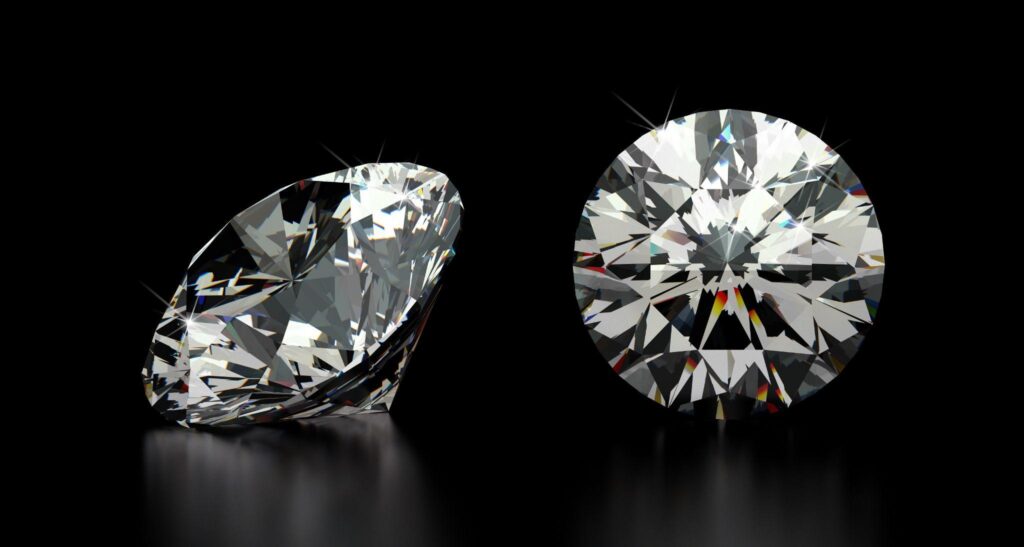
Round cut diamonds are the most popular diamond shape, representing about 75% of all diamonds sold. Due to the mechanics of its shape, the round cut is generally superior to fancy diamond shapes at the proper reflection of light, maximizing potential brightness.
Princess Cut Diamonds
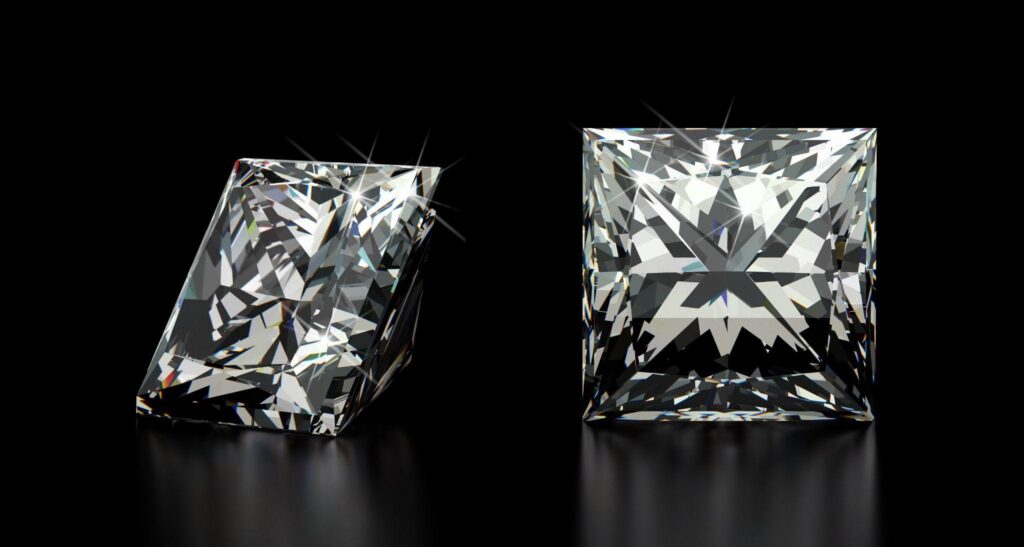
Princess cut diamonds, known for their sharp, uncut corners and square shape, are the second most popular diamond shape. Princess cuts can vary greatly in how square or rectangular they are. This is a perfect cut for those who prefer a square shape but still want the brilliance of a round cut.
Oval Cut Diamonds
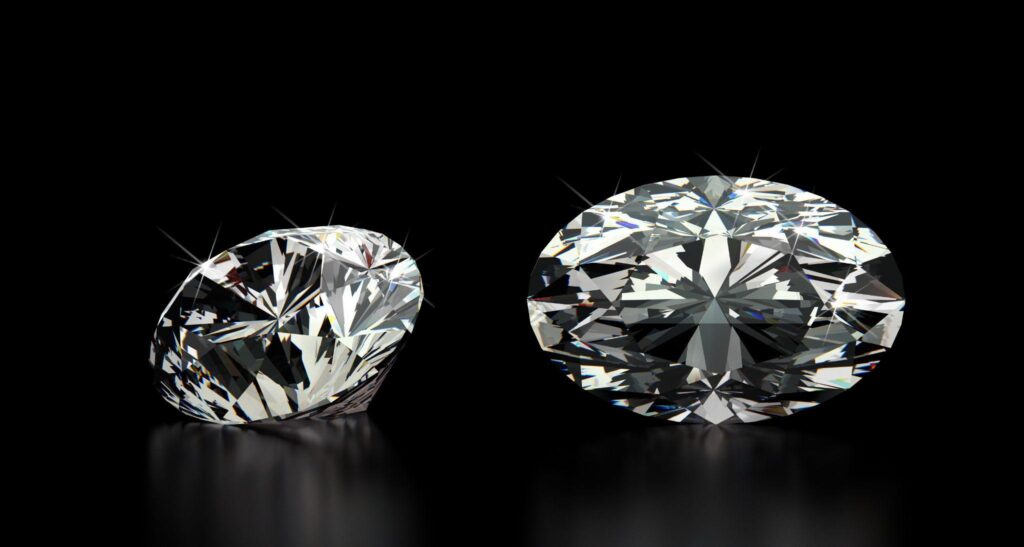
Oval cut diamonds are simply an elongated version of the round cut. The elongated shape can create the illusion of greater size. The elongated form of the diamond can also lend a longer, more slender look to the wearer’s finger, an aesthetic appeal frequently sought-after.
Marquise Cut Diamonds
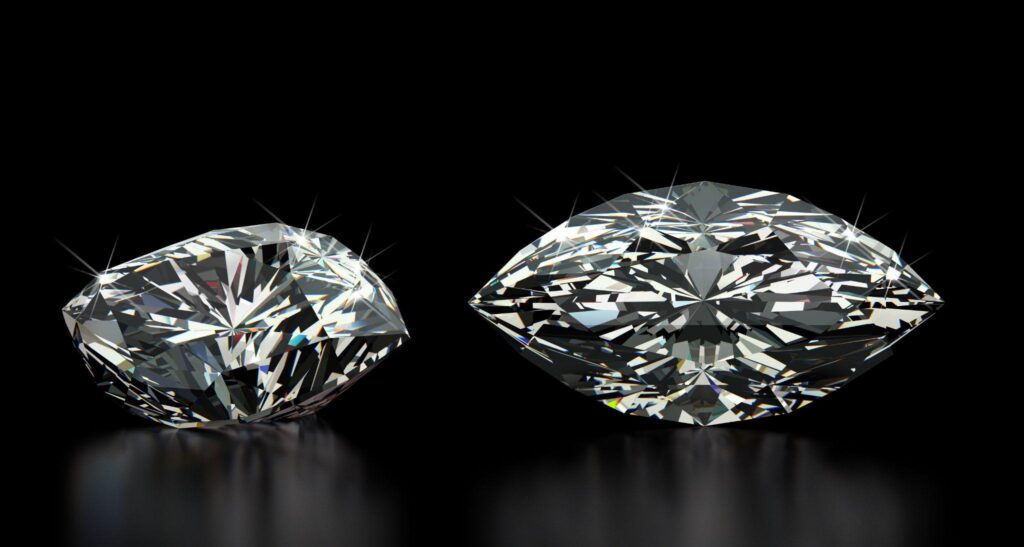
The marquise cut diamond, characterized by its distinctive football shape, draws its inspiration from the captivating smile of the Marquise de Pompadour, a muse of the Sun King, Louis XIV. Its elongated and narrow shape imparts an illusion of enhanced size, adding to the allure of this unique cut.
Pear Cut Diamonds
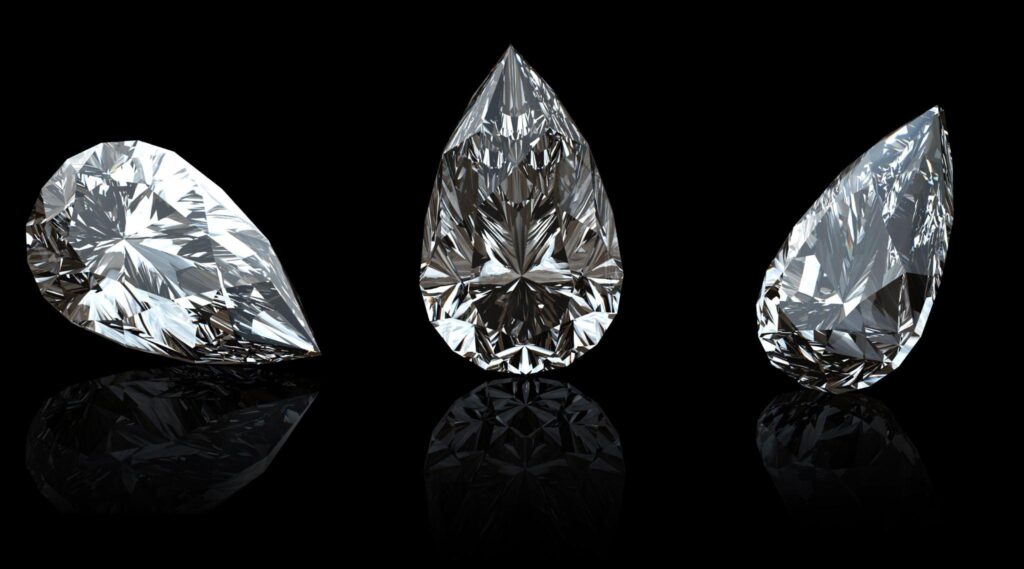
The pear cut diamond is a combination of a round and a marquise shape, with a tapered point on one end. The diamond is always worn with the narrow end pointing toward the hand of the wearer. Like the oval cut, the pear shape can make the wearer’s finger appear longer and slimmer.
Cushion Cut Diamonds
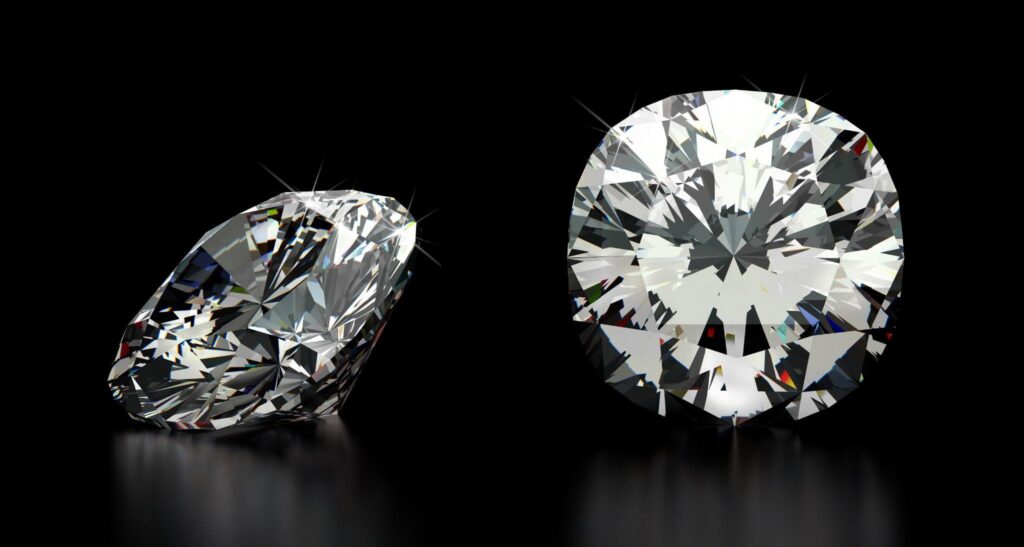
The cushion cut diamond blends a square form with softened corners, reminiscent of a pillow, which gives it its name. As a classic cut steeped in history, it has graced the world of gemstones for nearly two centuries. In its first hundred years, it reigned supreme as the most coveted diamond shape, akin to the popularity of the round cut in contemporary times.
Emerald Cut Diamonds
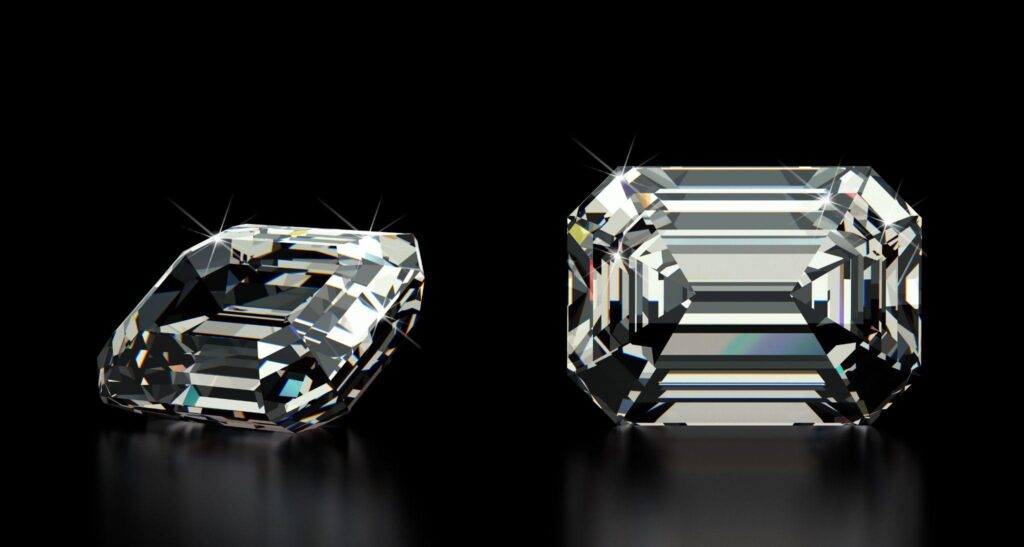
Emerald cut diamonds showcase a distinct visual charm, attributed to the rectangular facets that are step-cut into the stone’s pavilion. This cut embodies the diamond’s original clarity beautifully but requires a higher standard of clarity than other shapes, as inclusions and flaws are more visible.
Baguette Cut Diamonds
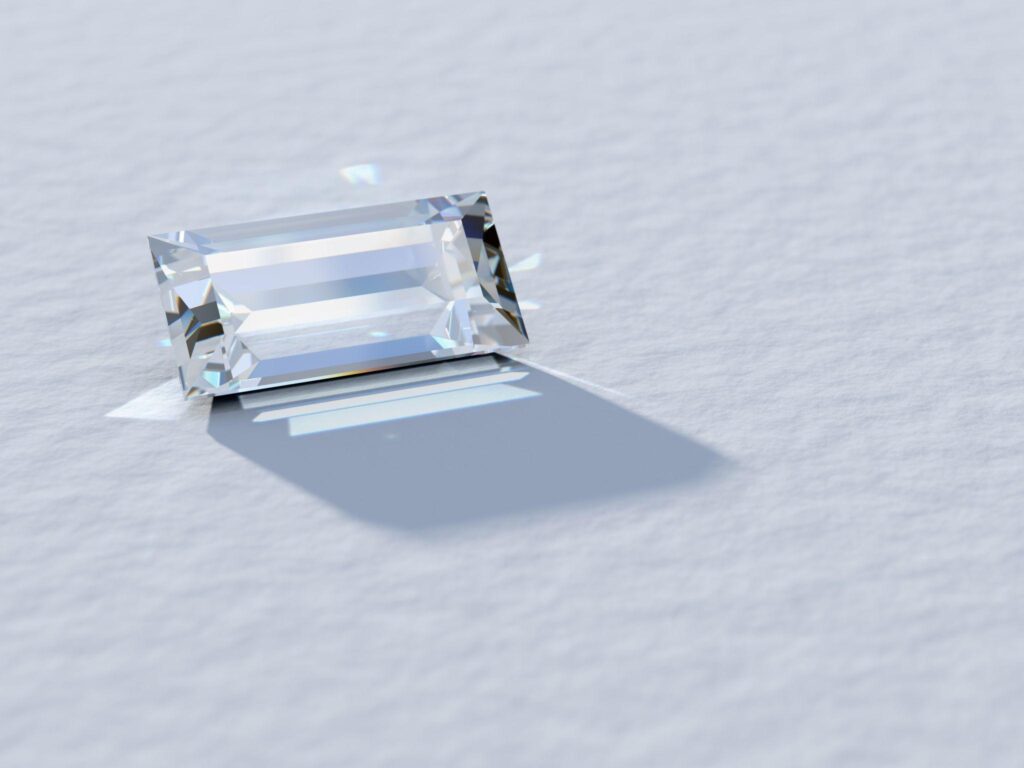
The standard baguette cut and emerald cut are very similar, but the key difference between them lies at the corners of the stone. The corners on a baguette diamond are perfectly square, while the corners on an emerald cut diamond are cut off, leaving an angled corner. Emerald cut diamonds also have more facets (baguette diamonds only have 14 facets) and tend to be a bit wider and more rounded in overall appearance.
Asscher Cut Diamonds
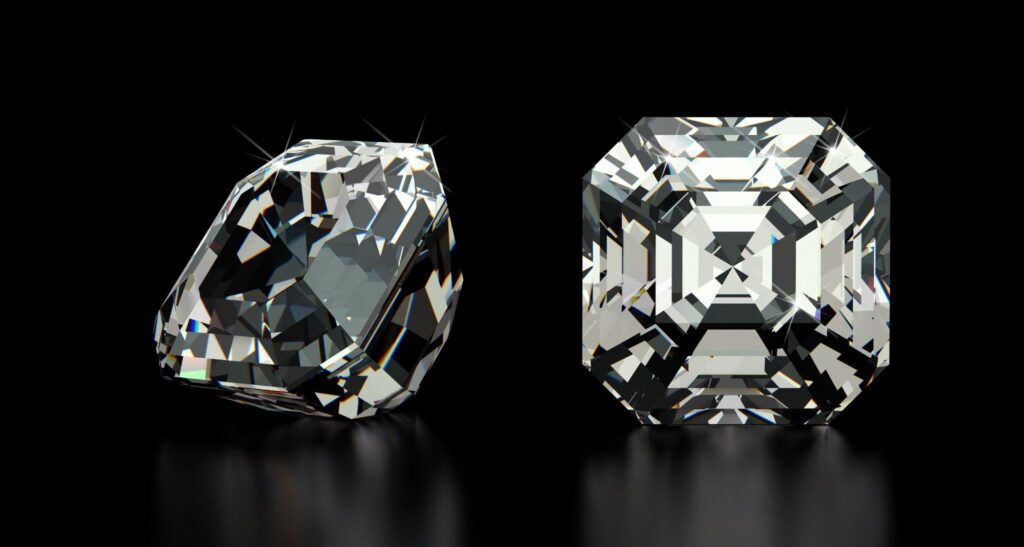
Asscher cut diamonds are similar to the emerald cut, but in a square shape with larger step facets, higher crowns, and smaller tables. This blend often produces more brilliance than the emerald cut.
Radiant Cut Diamonds
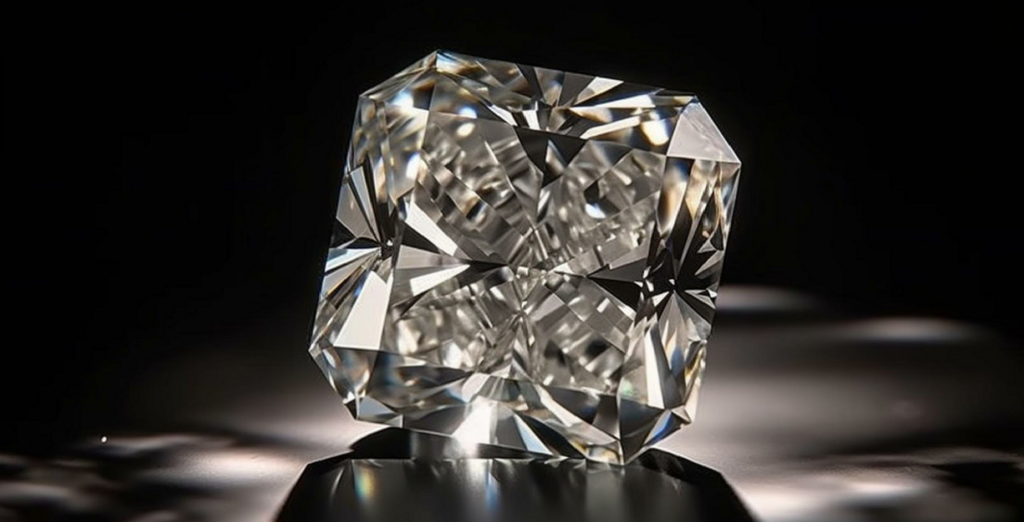
Pioneering a vibrant aesthetic, the radiant cut was the inaugural square cut (albeit with a slightly rectangular shape) to feature a comprehensive brilliant-cut facet pattern across both the crown and pavilion. This innovative design approach results in a square diamond that is both vivacious and radiant.
Heart Cut Diamonds
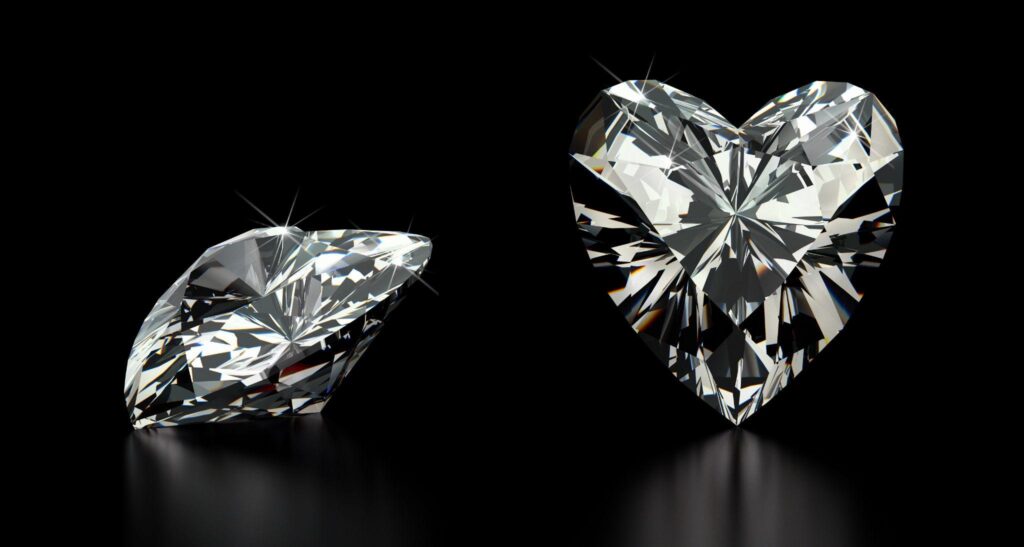
Heart cut diamonds, with their unique shape, are undeniably symbolic of love. These diamonds are often chosen for solitaire pendants and rings, adding a sentimental touch to these pieces. When selecting a color grade for a heart-shaped diamond, bear in mind that even though a J-color diamond offers an attractive price, a slight hint of color may be noticeable in the stone’s corners.
The Gemological Institute of America (GIA) and Diamond Cuts
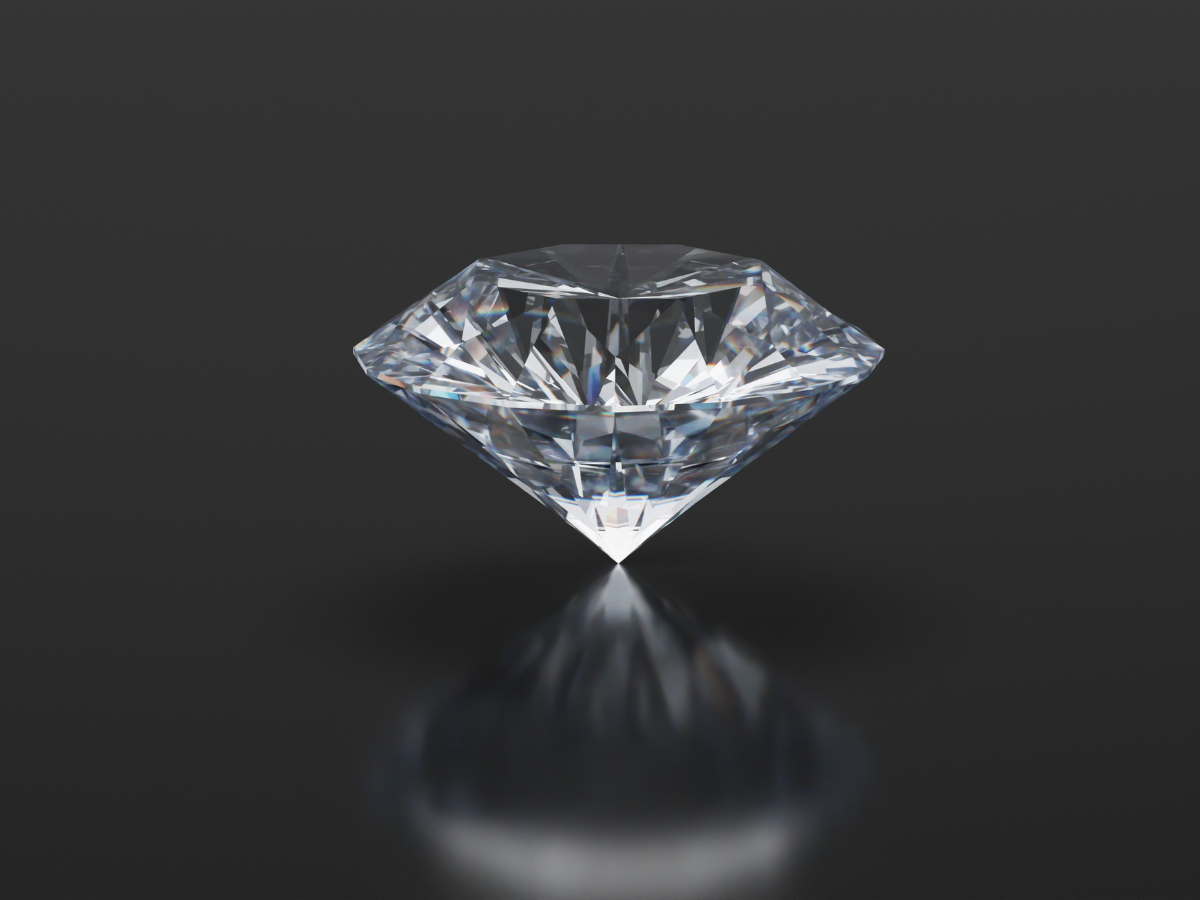
The Gemological Institute of America (GIA), a globally recognized authority in gemology, plays a crucial role in defining and assessing diamond cuts.
When evaluating the cut of a diamond, GIA considers several aspects that impact the diamond’s interaction with light and, hence, its overall visual appeal. These considerations encompass the diamond’s brightness (the cumulative light rebounding from the diamond), fire (the light’s spread into different colors of the visible spectrum), and scintillation (the interplay of light and shadow along with the bursts of sparkle seen when the diamond is in motion).
The GIA’s cut-grading system specifically applies to the standard round brilliant cut diamond, as this cut’s proportions have been optimized for brilliance and fire. The grading categories range from Excellent, Very Good, Good, and Fair to Poor. A diamond with an “Excellent” cut grade is designed to refract a maximum amount of light that enters through its top, reflect it from one facet to another, and finally disperse it through the top of the diamond.
It’s important to note the GIA does not yet provide cut grades for fancy shaped diamonds such as pears, ovals, or hearts because their proportions can vary significantly and preferences can be quite subjective.
Selling Your Diamond to Diamonds USA
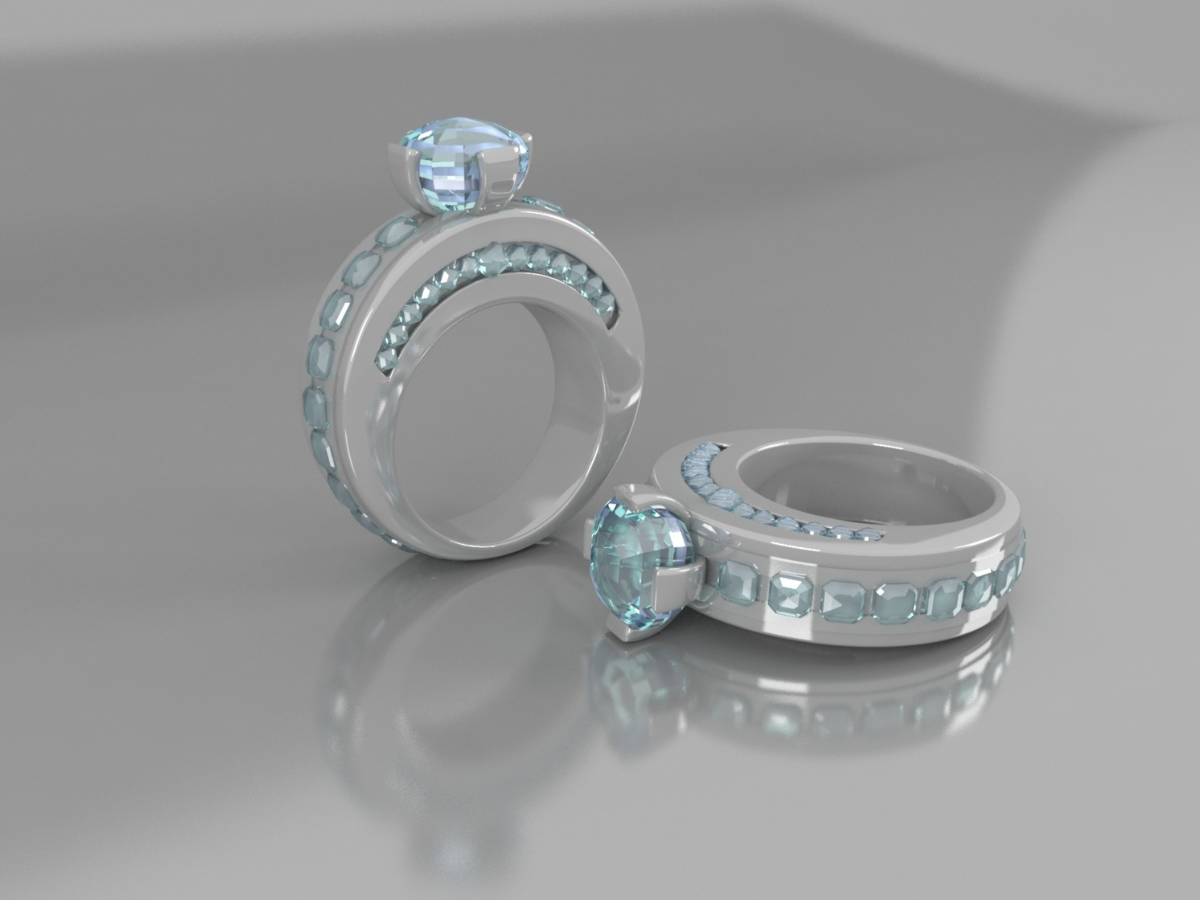
Each diamond cut offers its unique allure and brilliance. By understanding the characteristics of these various cuts with our Diamond Cut Guide, you’re well-equipped to determine the potential value of the diamond you’re looking to sell. This knowledge can assist you in making a confident decision that aligns with your goals and expectations.
ABOUT DIAMONDS USA
Diamonds USA is a prominent online buyer of all diamonds, as well as gold, silver, platinum, and palladium, in the United States. Since 2005, we have paid millions to thousands of customers for their unwanted diamonds or broken precious metal jewelry. We offer a quick and straightforward selling process, ensuring customers receive prompt and competitive offers for their items. Learn more about us, or request your free Appraisal Kit now: